A piece of jewellery is akin to a hung photograph. The setting — maybe the gold chain of a necklace, or the silver prongs of a ring — is the frame. The metaphorical photograph — the thing that is framed — is always something we find precious: that which we appreciate, value, hold dear, find beautiful. Some 115,000 years ago, the first humans created the world’s oldest known jewels by stringing together snail shells. Even now, we can imagine what they found precious about those wondrous, whorl-shaped objects. As mining technologies advanced, beaches opened up into dazzling underground lairs of metal, diamonds and stones. Ancient Egyptians made adornments from gold. Shang Dynasty kings preferred silver and jade. European monarchs had (and still have) a penchant for colourful gems. “Diamonds are a girl’s best friend,” as Marilyn Monroe sang.
These precious materials remain the centerpieces of modern jewellery, but as society, technology and style evolves, the jewellery we make evolves in tandem. The modern world is filled, now, with much more than seashells. Beaches and city streets are brimming (and littered) with equally wondrous objects — coins, cigarette butts, Visa debit cards, Bic lighters, empty Coke cans. All you have to do is look a little closer, a little differently. What is precious? What is deemed worthy to hang from an earlobe or to grace the collarbone? In a broader sense: what is jewellery?
Turns out, almost anything. As they say: one’s trash is another’s treasure. A new generation of designers are exploring these questions, broadening the industry’s definition of “precious materials” by elevating the everyday — natural objects and man-made refuse — to the realm of prized jewel, and challenging fashion’s overconsumption in the process. Here, i-D speaks with a new generation of jewellers, Emily Frances Barrett, Danielle Karlikoff, Corrina Goutos and Caroline Ohrt, on how they’re redefining jewellery for 2020 and beyond.
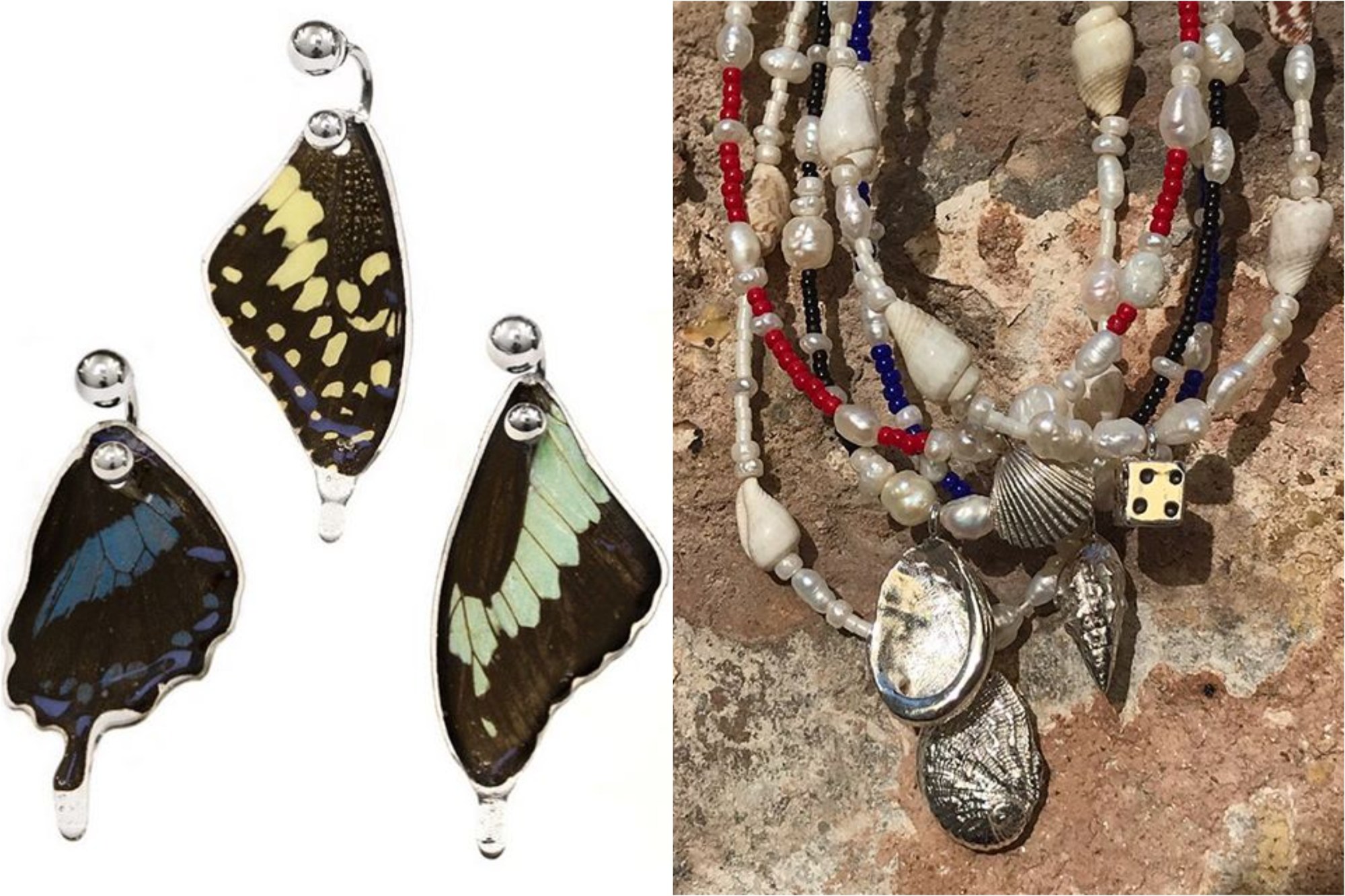

Emily Frances Barrett
Currently in residence at Alexander McQueen’s Sarabande Foundation, London-based artist-slash-jeweller Emily Frances Barrett finds many of her gems — butterfly wings, pottery shards, cigarette butts — while mud-larking in the River Thames.
How did you start making jewellery?
I started when I was quite young. At first, they were just simple bits of string threaded with things I’d find on the beach like limpet shells and stones. Then I became obsessed with tiny glass Japanese delica beads and Swarovski crystals. Later, I studied BA Illustration at Brighton, where I was building intricate animation sets. I’ve always loved storytelling and when I began prop-making and working with set designers, I became much more aware of fashion as a platform for that. Jewellery encompasses so many things that I love: intricacy, craftsmanship, design and stories. I went full circle: I’m still making jewellery with things I find on the beach.
What drew you to using found objects as a medium?
I never set out to create jewellery from found objects. I instinctively collect things that inspire me, and some of those are found and natural objects, some not. Like a magpie, I’m drawn to shiny things. If something looks out of place, my eyes are instantly attracted. There’s something intriguing about objects with any sort of history or past. They have stories to tell and imperfections they’ve acquired along the way. Old, worn, or used is always more interesting than something new and clinical; it’s more human.
How do you approach sustainability through your designs?
I always try to source ethically and make sustainably, and my practice is sustainable by nature, as I make everything in my workshop by hand. Reusing and uplifting found or existing materials into new states of preciousness is the ultimate form of recycling. And although it’s not the drive behind my ideas, I’m trying to not be part of the problem.
Could your pieces exist on their own, without being related to the body?
Absolutely. I make things firstly as objects or sculptures. They have to be beautiful in their own right, something you’ll desire even before you put it on. I definitely own wearable items such as shoes that rub, or a 17th century dog collar that I don’t wear, but I have them because I love them as objects.

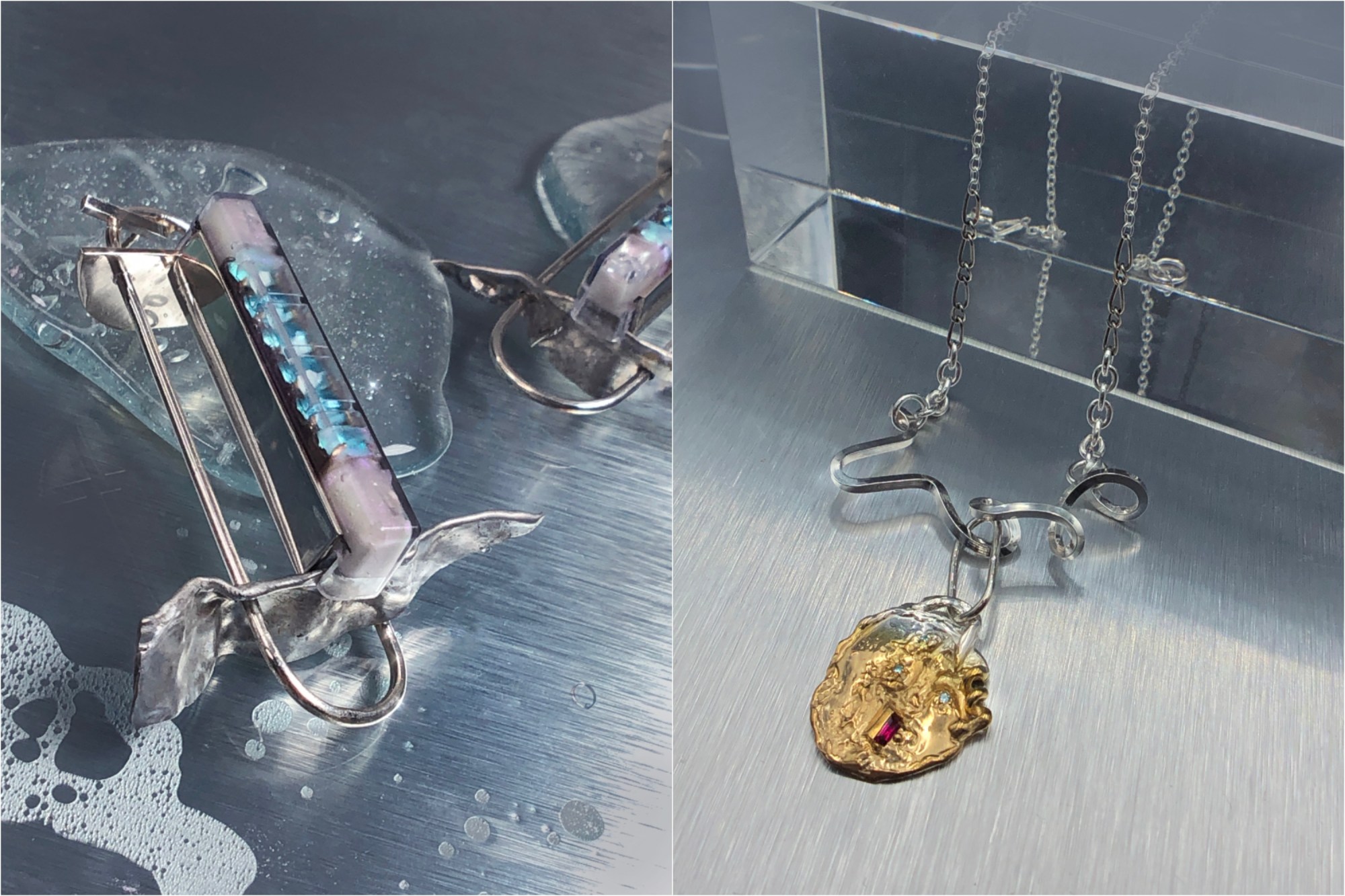
Danielle Karlikoff
Somewhat of an alchemist, Sydney-based jeweller Danielle Karlikoff transmutes family heirlooms and refuse, alike, into one-of-a-kind, custom jewels.
What drew you to using found objects as a medium?
Creating treasure from trash is a concept I’ve always been interested in. I feel that making jewellery from rubbish is an extension of that desire, to broaden perspectives of beauty in unexpected and playful ways. I’d say my main attraction to using found objects, and what I hope to achieve, is a sense of transformation or a shift in perspective. Actually, Mr. Squiggle, the Australian kids show, has been a major influence in this approach, for me, personally. (Laughs). In the show, kids send in their scribbly drawings and Mr. Squiggle connects the scribbles to create recognisable figures. It’s this power of transformation that’s always been so compelling to me.
How do you approach sustainability through your work?
I like to take a holistic approach to sustainability. Everything I make is a one-off. And the vast majority of my creations are custom orders, often upcycling clients’ family heirlooms. Most of my processes are achieved by hand, by myself and local craftspeople, and I often recycle gemstones and gold that clients give me. However, sustainability isn’t the primary purpose of why I’m drawn to found objects. I think there’s a common misconception that just because pieces are made from found materials, they must be good for the environment. Often, these objects may not be durable or well-made, so I think it’s about achieving a balance there.
Could you tell me about the found object jewel you’ve created that’s resonated with you the most?
The Coke-Can-Shaver-Cap earrings would have to be my favourite, as the overall form is quite formal — maybe even a little classic? — but the materials are totally not. I found the Coke can wedged and perfectly squished between some rocks, one day. And the following day I found a heap of shavers. I had the shavers and Coke can strewn across my desk and basically just played Mr. Squiggle with them.
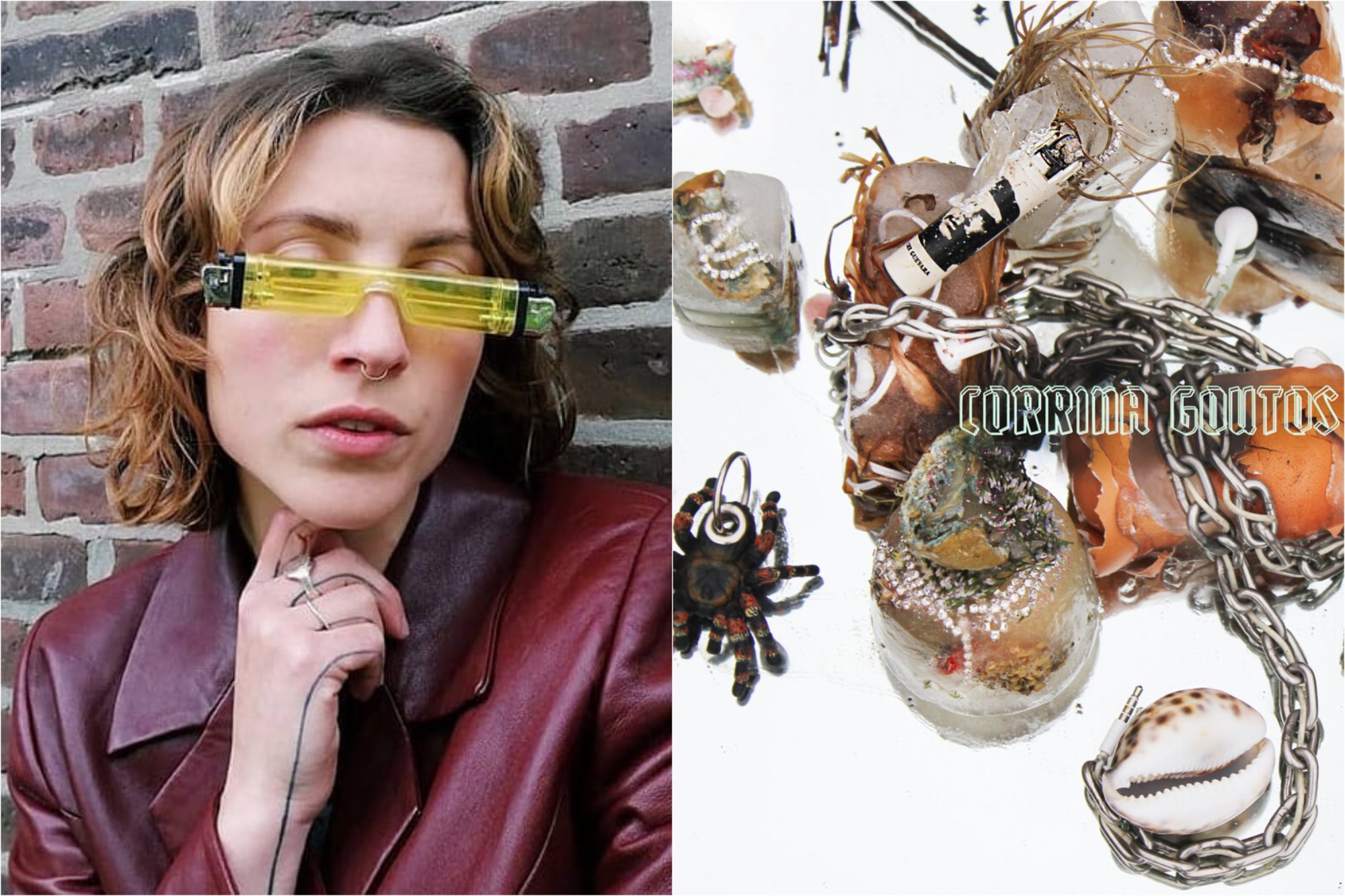
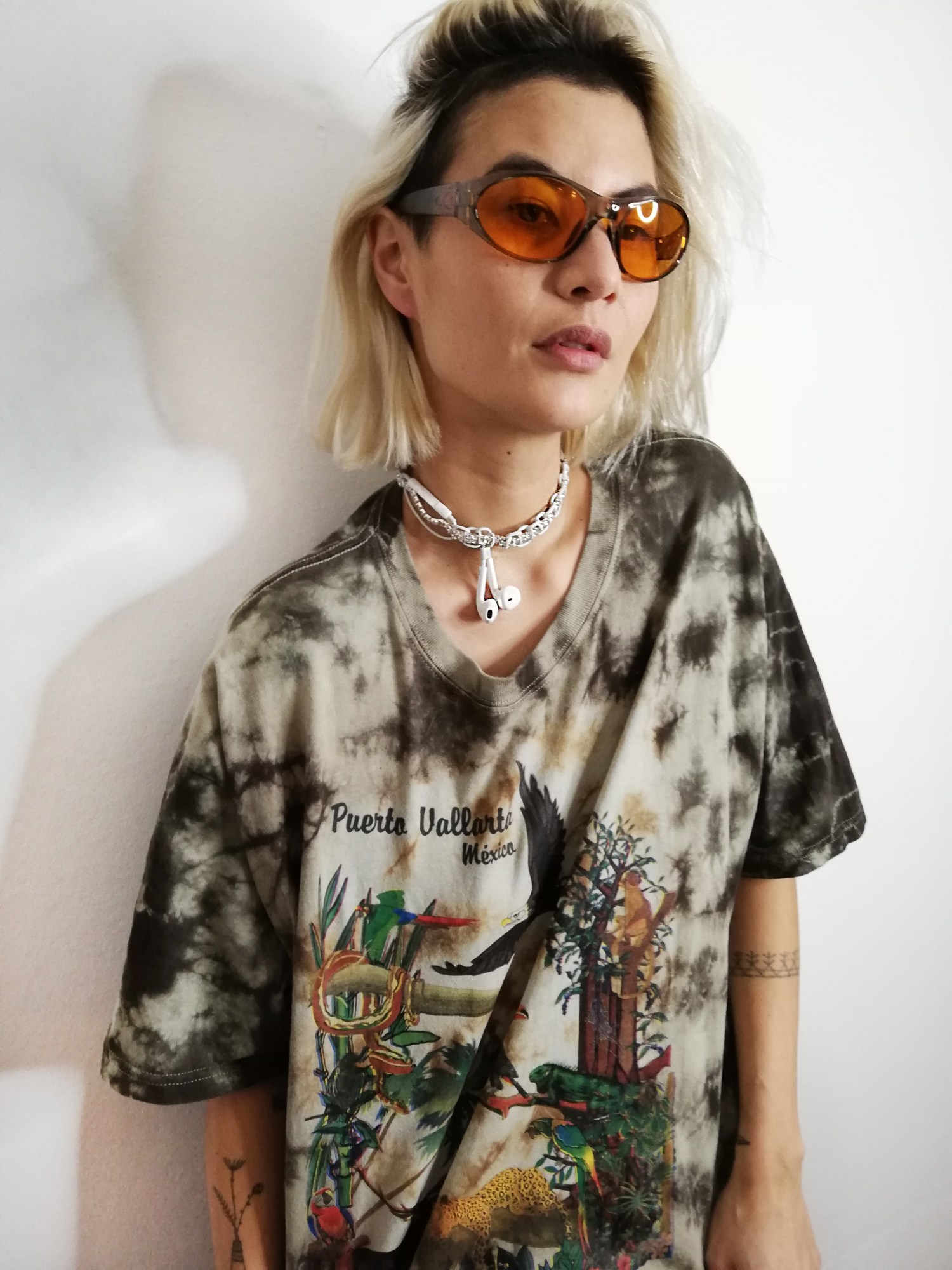
Corrina Goutos
Championing craftsmanship and a DIY attitude, Hamburg-based artist-jeweller Corrina Goutos transforms everyday objects into wearable artefacts that speak to — and question — our modern epoch.
How did you start making jewellery?
When I was six years old, I announced to my family that I was going to be an artist. By age ten I was bored of sculpture and, by 13, I was bored of painting. I’ve always enjoyed expressing myself through my appearance, sewing clothes and hunting secondhand gems. So jewellery became the combination of all my interests: an art form to live with, to collect, to make experiences with. It’s not something that’s hanging stagnant on a wall or untouchable in a gallery, but intimately integrated into our lives.
What drew you to using found objects as a medium?
Growing up, my immigrant grandma taught me a number of the skills she needed because her socio-economic situation forced her to be resourceful. Her influence led me to question the system I grew up in and develop my own set of values. I think the preservation of skills and craftsmanship like hers is a resource that’s just as valuable as materials. And I think it’s time that we radically reassess what we consider precious for future generations. Is it really still displacing countless people and toxifying hundreds of tons of earth just to extract enough gold to make an engagement ring? Considering we live in a geological epoch defined by the complete alteration of the planet by man, maybe it’s time to rewrite these traditions. In this line of thinking, my motto is to learn the properties of a ready-made object just as a craftswoman would a raw material. The more banal the object, the more potential for transformation. And this is when craftsmanship really has its place to shine. Sustainable practice was a kind of accidental outcome of these sources of inspiration. I’m just attracted to the vibrant object over the dead material, the DIY attitude over dependence on distant manufacturing partners, and the overlooked thing over objects of desire from mainstream culture.
Could your pieces exist on their own, without being related to the body?
Yes, I always consider the works complete on their own as small sculptures. My design process, however, always relates to the body because the materials I use have been intimately engaged with prior to me re-assembling them. They’re infused with traces of human activity. When one of my compositions speaks to someone’s personal objecthood so much that they want to wear it and build more memories upon it, it’s a very exciting moment because then the concept I had for the piece continues to evolve with its wearer.

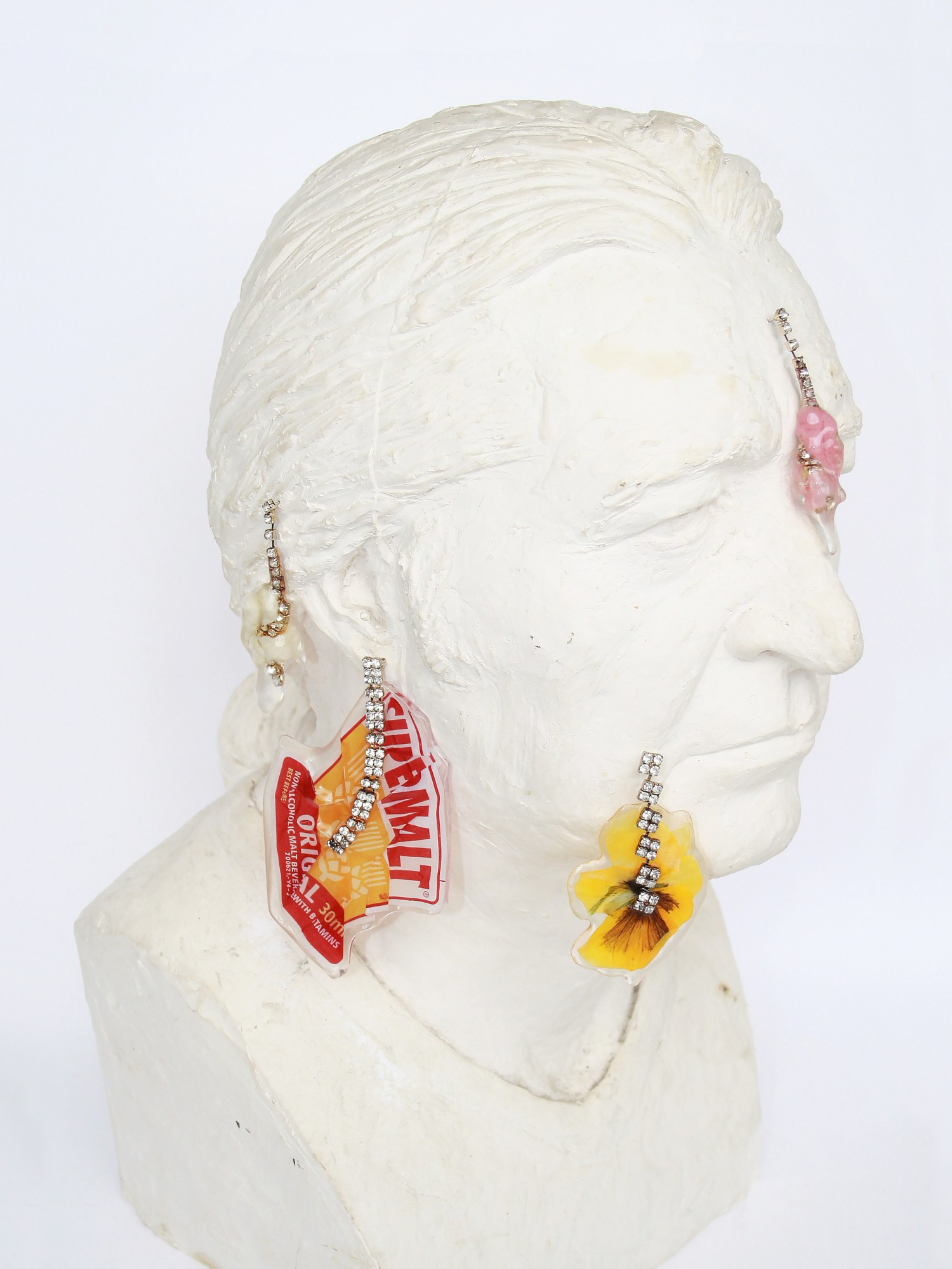
Caroline Ohrt
Copenhagen-based jeweller and RCA grad Caroline Ohrt creates emotionally-charged talismans from her own collection of personal objects (chewing gum, flowers, Visa cards, etc).
How did you start making jewellery?
I started making jewelry after graduating from Royal College of Art, where I studied womenswear. Looking back on my final collection, it felt more like I was making avant-garde body jewellery. It can be difficult for people to relate to pieces with that size and proportion on a functional level. In the end, it felt more like I was just making beautiful things that would never be worn and it just felt a bit wasteful. I love playing with shape, texture and contrasting materials. And jewellery is just such an amazing way to make these small, unique sculptures and material experiments that you can actually wear every day, and connect with on an emotional and physical level.
Why do you create jewellery from found objects?
I started making jewellery because I was struggling with a lot of the guilt of making in general. But making is just such a huge part of who I am. So by only using found objects and upcycled materials, I was kind of able to relieve myself from some of that guilt. But also, more importantly, I wanted to show people how to revalue and repurpose all these amazing and weird everyday objects that we don’t normally notice. And maybe inspire people to view these objects in a way where they see creative possibilities instead of dead waste.
I work with a lot of emotionally-charged objects, my own personal objects that I’ve collected through the years. They could be anything. It could be a Norwegian coin that I found in my sofa. Or it could be a flower I got from a friend, or just my own chewing gum. What I’m really passionate about is seeing whether I can create a stronger emotional bond between the owner and the individual piece of jewellery by sharing the object’s stories with its new owner. Maybe in the perfect world, the owner can connect with these pieces because they know they’re not just an aesthetic object, but more of a personal gift or a small time capsule.
